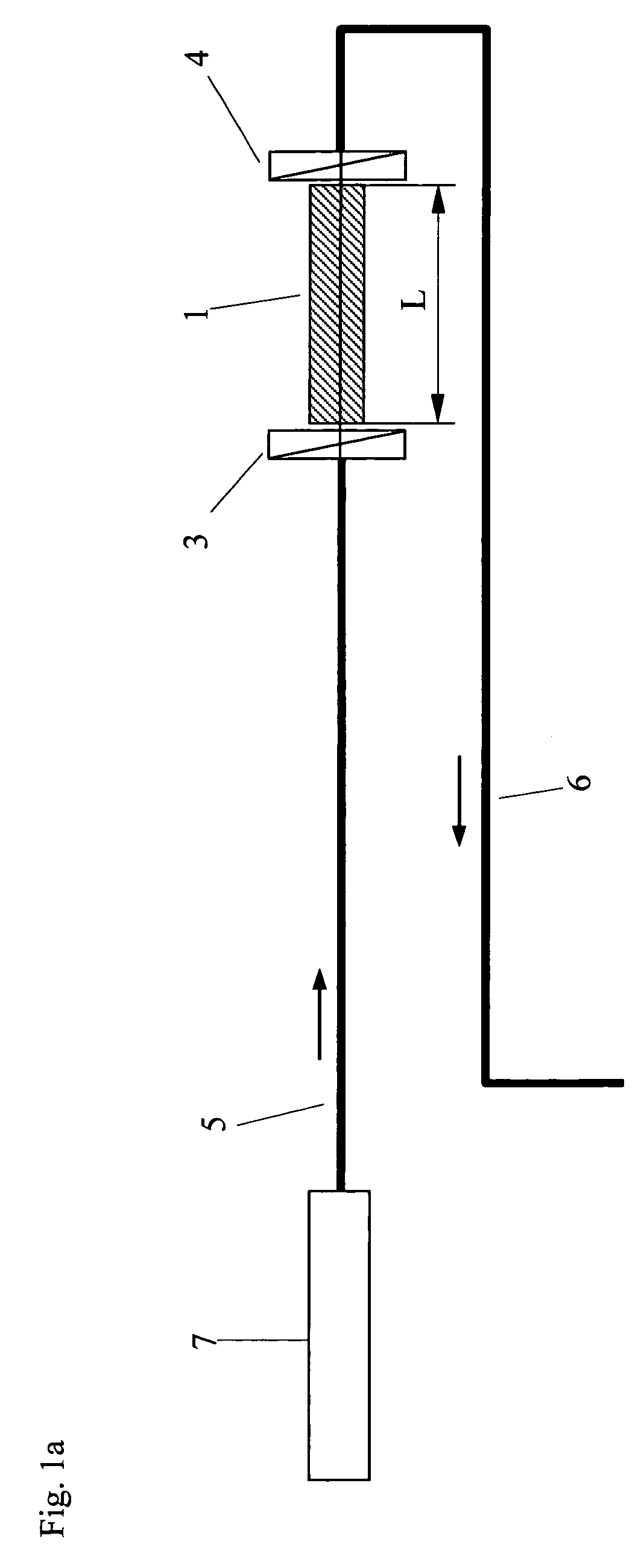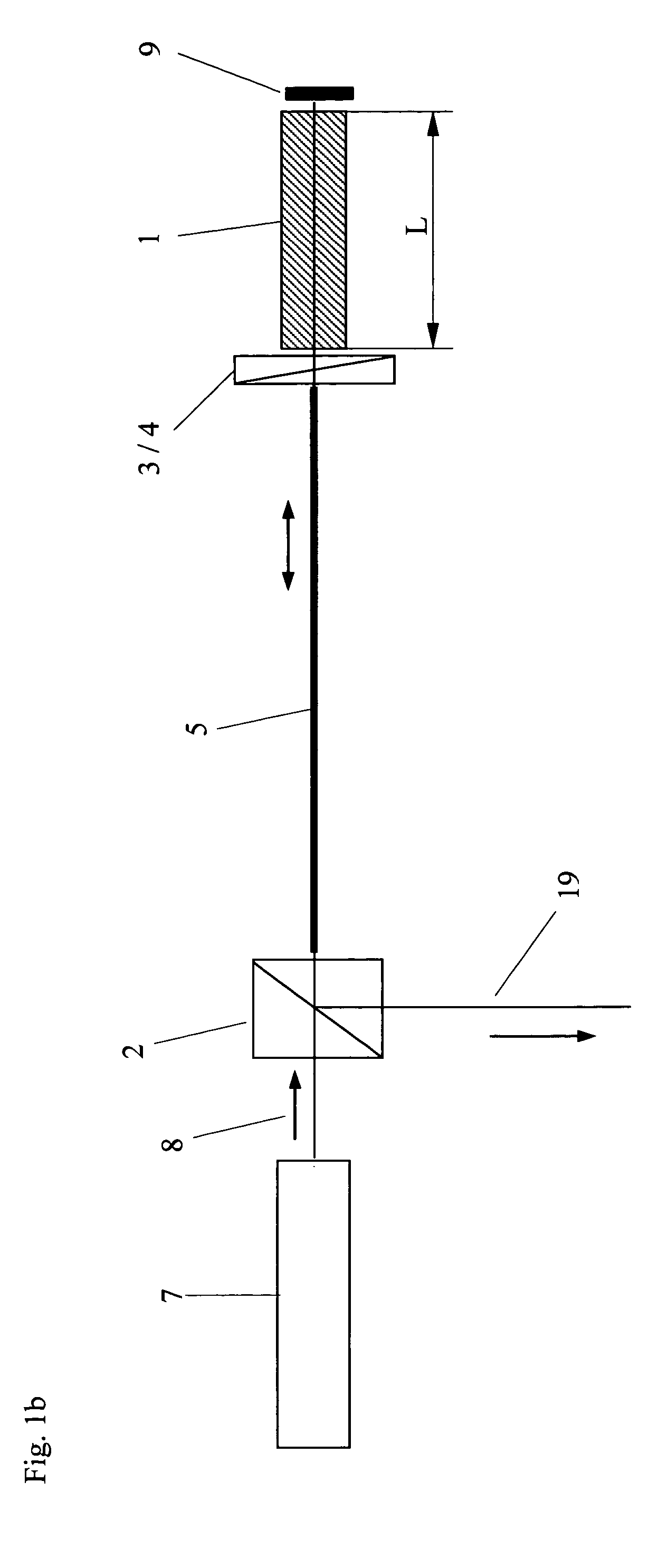Method and apparatus for detecting the position and the orientation of an interventional device
a technology of positioning and positioning, applied in the direction of magnetic variable regulation, diagnostics, sensors, etc., can solve the problems of affecting the operation etc., to achieve the effect of reducing the time for getting mr images and reducing the information about the position and orientation of the interventional devi
- Summary
- Abstract
- Description
- Claims
- Application Information
AI Technical Summary
Benefits of technology
Problems solved by technology
Method used
Image
Examples
example 1
[0059]As the magneto-optically active material for the position sensor, a 7.5 mm-long crystal of Terbium-Gallium-garnet (TGG) was chosen, which offers a high Verdet constant of about 7 deg / T / mm at λ=675 nm. A diode laser (corresponding to model number DLS15, manufactured by Linos, Germany, in this experiment) was used as a light source and the light was coupled into the crystal through an optical fiber (core diameter: 63 μm) and a polarizing foil. A rotatable analyzer was placed directly behind the crystal and the power of the transmitted light was measured far away from the sensor using again an optical fiber for light transmission and a photo detector (transmission type sensor). Several different experiments were carried out: (a) The sensor was placed at the patient table of a commercial whole body 1.5 T MR scanner (corresponding to Siemens Magnetom Symphony in this experiment) and the Faraday rotation was measured with the sensor as a function of z-position and compared to the ma...
PUM
 Login to View More
Login to View More Abstract
Description
Claims
Application Information
 Login to View More
Login to View More - R&D
- Intellectual Property
- Life Sciences
- Materials
- Tech Scout
- Unparalleled Data Quality
- Higher Quality Content
- 60% Fewer Hallucinations
Browse by: Latest US Patents, China's latest patents, Technical Efficacy Thesaurus, Application Domain, Technology Topic, Popular Technical Reports.
© 2025 PatSnap. All rights reserved.Legal|Privacy policy|Modern Slavery Act Transparency Statement|Sitemap|About US| Contact US: help@patsnap.com



